Venus Flytrap Plant
- January 19, 2024
- 0 comment
The Venus flytrap (Dionaea muscipula) is a carnivorous plant native to subtropical wetlands in the East Coast of the United States. It captures prey, mainly insects and spiders, using modified leaves that snap shut when hair-like structures (trichomes) on their surfaces are stimulated. This rapid closing mechanism is a response to touch and involves changes in cell turgor pressure. The plant then secretes digestive enzymes to break down its prey. It’s a perennial plant, known for its distinctive trapping mechanism and faces threats from habitat loss and over-collection.
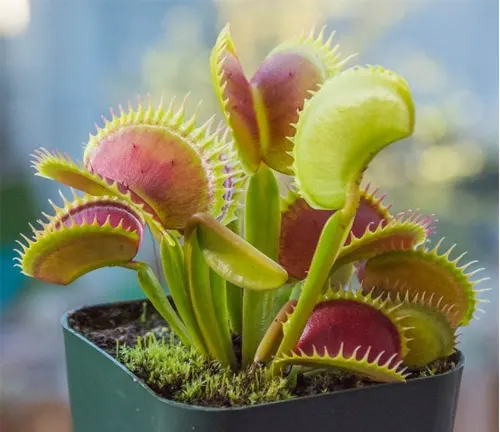
| Characteristic | Description |
|---|---|
| Scientific Name | Dionaea muscipula |
| Native Habitat | Subtropical wetlands in East Coast of the USA (North and South Carolina) |
| Soil Preference | Nutrient-poor, acidic soil |
| Trapping Mechanism | Snap trap with hair-like triggers on leaf lobes |
| Leaf Structure | Two lobes with spiny ‘teeth’ on the edges |
| Prey | Mostly insects and spiders |
| Digestion | Secretes digestive enzymes to break down prey |
| Size | Trapping structure about 1 inch long |
| Conservation Status | At risk due to habitat destruction and over-collection |
| Unique Feature | One of the few plants capable of rapid movement |
Growing Conditions of Venus Flytrap
Light Requirements
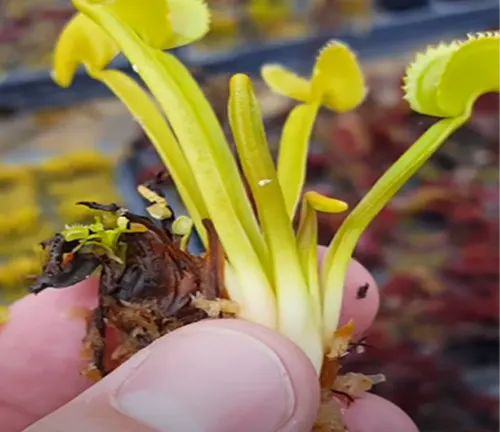
The Venus flytrap (Dionaea muscipula) thrives in very specific conditions, closely emulating its native habitat of subtropical wetlands. One crucial factor for its growth is light; these plants require bright, direct sunlight for about 12 hours a day to thrive. When grown indoors, they should ideally be placed near a south-facing window or under a dedicated grow light to ensure they receive sufficient light. The intensity of the light is key to maintaining the plant’s health, encouraging the development of its signature traps, and ensuring it has enough energy to carry out its unique insect-catching mechanism.
Temperature and Humidity
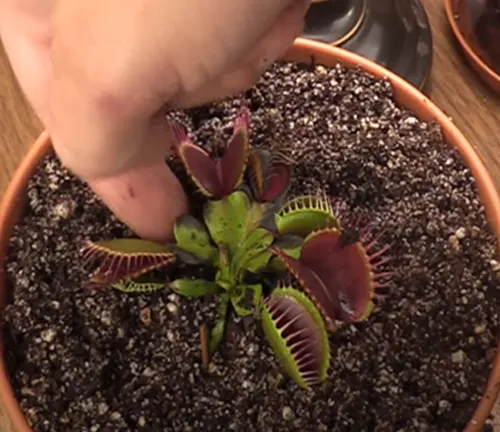
Temperature is crucial for the Venus flytrap, preferring 70°F to 95°F (21°C to 35°C) in spring and summer and entering a vital dormancy phase at cooler temperatures of 35°F to 50°F (2°C to 10°C) in winter. Humidity should be maintained at 50-70%, possibly requiring a humidity tray or humidifier in drier conditions. Watering is essential with pure water (distilled, rainwater, or reverse osmosis) to avoid mineral damage, and the soil should be kept consistently moist, using the tray method, without becoming waterlogged.
Soil And Preferences

The soil preference of Venus flytraps is quite specific; they require a nutrient-poor, acidic medium. A mix of sphagnum peat moss with perlite or sand (in a 1:1 ratio) mimics their natural growing conditions. It’s crucial to avoid enriched potting soil or fertilizers, as the high nutrient content can be detrimental to the plant.
Benefits of Having a Venus Flytrap
Natural Pest Control

The Venus flytrap serves as an organic and fascinating method of pest control. It naturally captures and digests small insects, such as flies and ants, helping to reduce the number of these pests in its vicinity. This can be especially beneficial in indoor spaces or greenhouses where such insects might be a nuisance. By integrating a Venus flytrap into your space, you’re adopting a natural and environmentally friendly approach to managing pests, avoiding the need for chemical insecticides that can be harmful to both health and the environment.
Educational and Aesthetic Value
Venus flytraps are not only intriguing due to their unique mechanism of trapping prey but also provide an educational insight into the adaptability and diversity of plant life. They can spark curiosity and serve as a practical example of plant adaptation and evolutionary biology, making them a valuable educational tool for both children and adults. Additionally, with their distinctive appearance and fascinating behavior, Venus flytraps add aesthetic value to any space, serving as a conversation starter and a source of fascination for plant enthusiasts and guests alike. Their care and observation can be a rewarding hobby, offering a firsthand experience of the wonders of the natural world.
Common Issues and Solutions
Blackening of Traps
Issue: It’s normal for traps to turn black and die after they have closed and reopened a few times or after digesting prey. However, if your plant’s traps are turning black prematurely, it could be a sign of overfeeding, poor water quality, or excessive sunlight.
Solution: Ensure you’re using distilled, rain, or reverse osmosis water. Feed the plant only once a month and ensure it’s not exposed to excessively bright direct sunlight, especially in hotter climates.
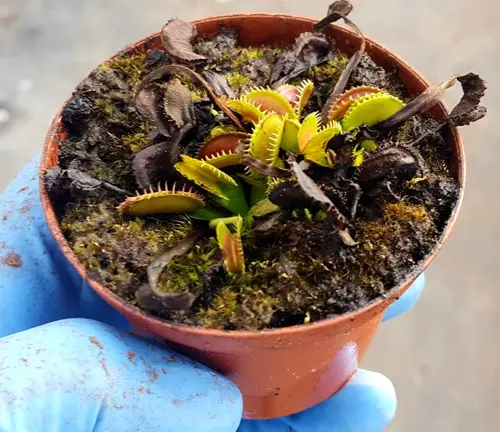
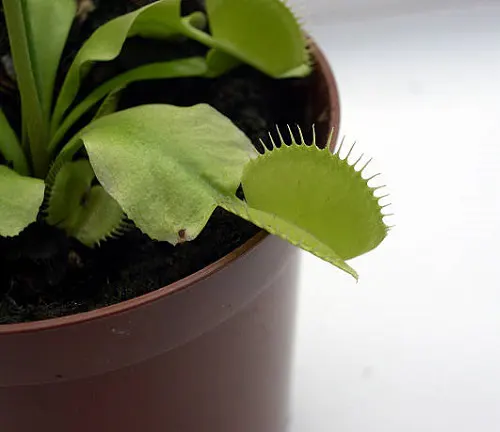
Lack of Trap Closure or Slow Growth
Issue: If the traps are not closing quickly or the plant seems to be growing very slowly, it might not be getting enough sunlight or the right kind of soil.
Solution: Increase the amount of direct sunlight the plant receives. If already getting enough sunlight, check the soil composition. Venus flytraps prefer nutrient-poor, acidic soil like a mix of sphagnum peat moss and perlite or sand.
Mold or Fungus Growth
Issue: White mold or fungus can sometimes appear on the soil, often due to overly moist conditions or poor air circulation.
Solution: Ensure the plant is in a well-ventilated area. If you see mold, reduce watering slightly and remove any dead foliage from the soil’s surface. In persistent cases, a fungicide suitable for carnivorous plants can be used.

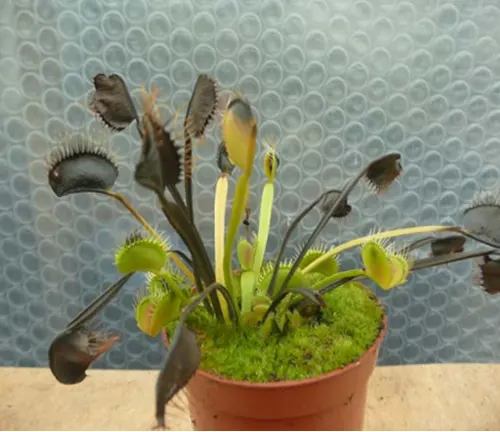
Brown Tips on Leaves
Issue: This can be caused by low humidity or by using water with minerals in it (tap water).
Solution: Increase humidity around the plant using a humidity tray or a humidifier and make sure you are using the right type of water (distilled, rain, or reverse osmosis).
Solution:
Provide your Venus flytrap with 4-6 hours of direct sunlight daily and keep the soil moist using distilled or rainwater. Use a soil mix of peat moss and perlite or sand. Feed it small insects every few weeks, but avoid overfeeding. Maintain high humidity and keep the plant in a warm environment, ideally between 70-95°F. Avoid a dormancy period and ensure these conditions are consistent year-round.
By understanding these common issues and their solutions, you can ensure your Venus flytrap remains healthy and continues to be a captivating addition to your space. Regular observation and adjusting care as needed are key to successfully growing this unique plant.
Propagation and Repotting of The Venus Flytrap
Venus flytraps (Dionaea muscipula) are fascinating plants, but they require specific care, especially when it comes to propagation and repotting. Here’s how you can successfully propagate and repot a Venus flytrap
Propagation
Propagation of Venus flytraps is typically done through division or by growing them from seed.
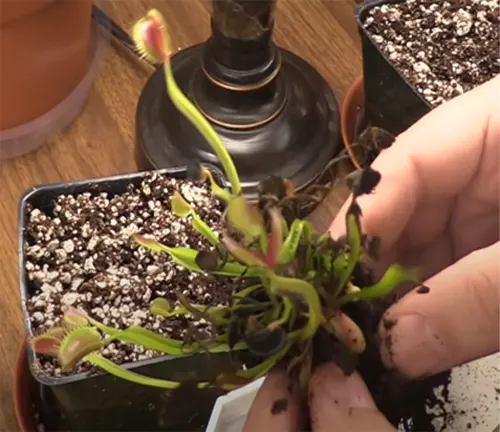
- Division (Most Common Method):
- Best Time:
The best time to divide Venus flytraps is during late winter or early spring when the plant is coming out of dormancy. - Process:
- Gently remove the plant from its pot and clear away the soil to expose the rhizome (root structure).
- You’ll see that the rhizome may have multiple growth points or ‘bulbs.’ These can be gently separated, ensuring each division has some roots attached.
- Use a sharp, clean blade if you need to cut the rhizome.
- Best Time:
- Seed Propagation:
- Venus flytraps can produce flowers and, subsequently, seeds.
- However, growing them from seed can be a lengthy process (it can take 2-5 years for a plant grown from seed to reach maturity), and the seeds need stratification (a period of cold treatment) to germinate.
Repotting
Venus flytraps prefer not to be disturbed too often, but repotting every 2-3 years can refresh the growing medium and give the plant more room to grow.

When to Repot
Early spring is a good time for repotting, as the plant is exiting dormancy and can recover more easily from the disturbance.
Here’s a concise step-by-step guide on when to repot Venus Flytraps:
- Timing: Repot Venus Flytraps during their dormancy period, typically in late winter or early spring.
- Frequency: Plan to repot every 12 to 18 months, or when you notice the pot is crowded or the soil is degraded.
- Soil Condition: If the soil seems compacted, or poorly draining, or if the plant’s growth has slowed, it’s time to repot.
- Root Check: If roots are coming out of the drainage holes or circling the surface of the soil, it’s time for a larger pot.
- Seasonal Signs: Observe the plant’s natural cycle; repot after flowering or when new growth appears in spring.
Repotting Process
Here’s a concise step-by-step guide on the repotting process for Venus Flytraps:
- Choose the Right Time: Repot during the plant’s dormancy in late winter or early spring.
- Prepare the Pot: Select a pot with drainage holes, one size larger than the current pot.
- Soil Mix: Use a mix of sphagnum peat moss and perlite or sand in a 1:1 ratio. Avoid fertilizers and regular potting soil.
- Gently Remove the Plant: Carefully take the Venus Flytrap out of its current pot, trying not to disturb the roots much.
- Trim Dead Material: Remove any dead traps or leaves and trim overly long roots.
- Planting: Place the Venus Flytrap in the new pot and gently add the soil mix around the roots. Keep the crown (where the leaves emerge) at soil level.
- Water Thoroughly: After repotting, water the plant well with distilled or rainwater, ensuring the soil is moist but not waterlogged.
- Post-repotting Care: Place the plant in a location with bright, indirect sunlight and maintain consistent moisture.
General Tips on Venus flytraps
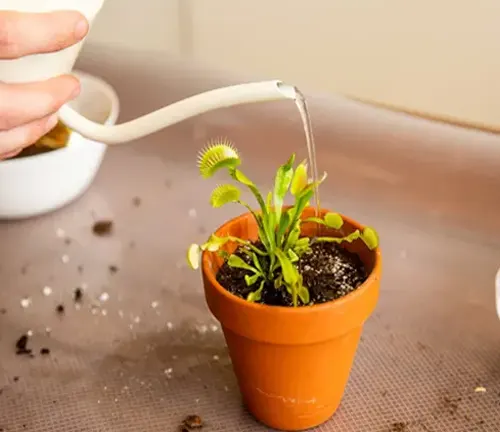
- Water: Always use pure water (distilled, rainwater, or reverse osmosis water) as Venus flytraps are very sensitive to minerals and chemicals in tap water.
- Soil: The soil should be acidic and nutrient-poor. A mixture of sphagnum peat moss and perlite or sand is ideal.
- Light: Venus flytraps require a lot of light. If grown indoors, they need a sunny window or a grow light.
- Humidity: These plants like high humidity. If your indoor air is dry, you may need to take measures to increase humidity around the plant.
Conclusion
In conclusion, the Venus flytrap (Dionaea muscipula) is a remarkable plant, not only for its unique insect-trapping mechanism but also for its specific growing requirements. To ensure the health and longevity of a Venus flytrap, it’s crucial to replicate its natural habitat as closely as possible. This involves providing bright light, maintaining high humidity, using pure water for watering, and planting it in nutrient-poor, acidic soil. Propagation, primarily through division, allows for the cultivation of new plants, while periodic repotting is necessary to refresh the growing medium and accommodate growth.
FAQs
- How often does a Venus flytrap need to be fed?
They don’t need frequent feeding; once a month is sufficient. If they are outdoors, they often catch enough prey on their own. - Can I feed my Venus flytrap meat or human food?
No, it’s best to feed it live or freshly killed small insects. Human food and meat are not suitable and can harm the plant. - How much sunlight does a Venus flytrap need?
Venus flytraps require around 12 hours of direct sunlight daily. If indoors, a very sunny window or a grow light can meet their light needs. - Why are the traps on my Venus flytrap not closing?
This can be due to a few reasons: the trap might be too old, it may have been triggered too many times, or the plant might be in poor health due to insufficient light or incorrect watering. - Do Venus flytraps need a dormancy period?
Yes, they require a winter dormancy period with reduced light and temperatures between 35°F and 50°F (2°C and 10°C) for about 3-4 months. - What type of water should I use for my Venus flytrap?
Use distilled water, rainwater, or reverse osmosis water. Tap water can contain minerals that can build up in the soil and harm the plant. - How do I repot a Venus flytrap?
Repot in spring, using nutrient-poor, acidic soil like a mix of sphagnum peat moss and perlite or sand. Be gentle with the roots and avoid disturbing the plant too much. - Can Venus flytraps live indoors?
Yes, they can live indoors if they receive enough light and their specific care requirements are met. - Why are the tips of my Venus flytrap’s leaves turning black?
Tips can turn black due to overfeeding, excessive sunlight, or using water with minerals. It’s also natural for traps to blacken and die after a few cycles of opening and closing. - How long can a Venus flytrap live?
With proper care, a Venus flytrap can live for 20 years or more.


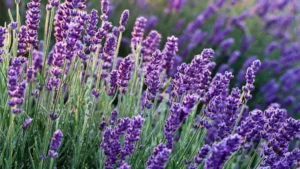
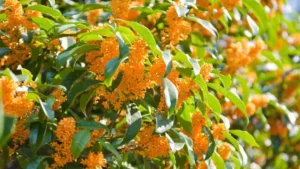
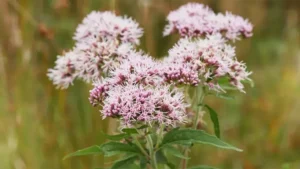
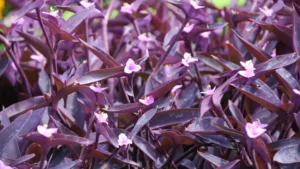
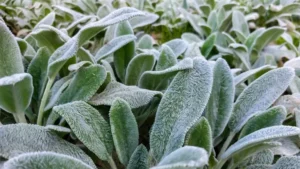
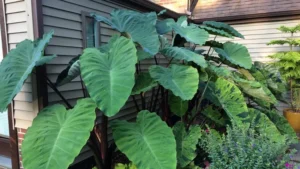
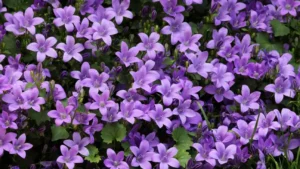
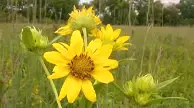

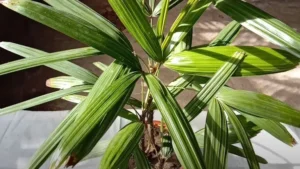

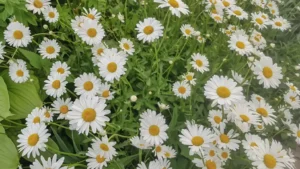
Leave your comment